
5 minute read
Evocation of Buttertflies
by Barb Boyer Buck
The Burrerfly Project in Rocky Mountain National Park ran from 1995-2011, under the direction of Dr. Paul Opler, entomologist, student advisor, and professor at Colorado State University. Opler had received a collection permit with the National Park Service to study butterflies and moths in Rocky.
Advertisement
“I mainly ran ultra-violet light traps to study moths,” he said, “but at the same time, my wife Evi and I were teaching classes on butterflies through the Rocky Mountain Conservancy, about three classes per year.” Richard Bray had attended one of these classes and decided he wanted to do an extensive study on the subject, so he moved from Maryland to Estes Park and became the lead researcher on the Rocky Mountain Butterfly project; unfortunately, Bray passed away several weeks ago.
Together, Bray and Opler designed a study to include walking, linear transects of 1,000 meters each in different life zones and on both the east and west sides of Rocky. The project utilized the collection efforts of 50 'citizen scientist' volunteers and was able to observe and photograph 141 confirmed species (as of July 2012), including several that had never before been found in the Park.

Arctic fritillary, Boloria chariclea, Brushfoot family; identified by Dr. Paul Opler.
photo by Pamela Johnson
Through his light-trapping activities, Opler discovered more than 1,000 species of moths, many were identified by internationally renowned experts. This beautiful diversity of Lepidoptera adds to the rich palette of flora and fauna in Rocky Mountain National Park.

Police Car Moth, Gnophaela vermiculata, [moth], Erebidae, Tiger moth family identified by Dr. Paul Opler.
photo by Dave Rusk
Ever since Opler was a child, beginning with family walks in California, he's been fascinated with nature.
While attending fifth grade in Pleasant Hill, he and his buddy Pete Robinson were encouraged by their teacher, Mrs McKewan, who arranged for the boys and their parents to visit the insect collection at the University of California at Berkeley. The boys then met with Dr. Edward O. Essig, professor of entomology and “from that moment, I decided I was going to go to the University of California and major in entomology,” remembered Dr. Opler in an interview with HIKE ROCKY magazine on September 13.
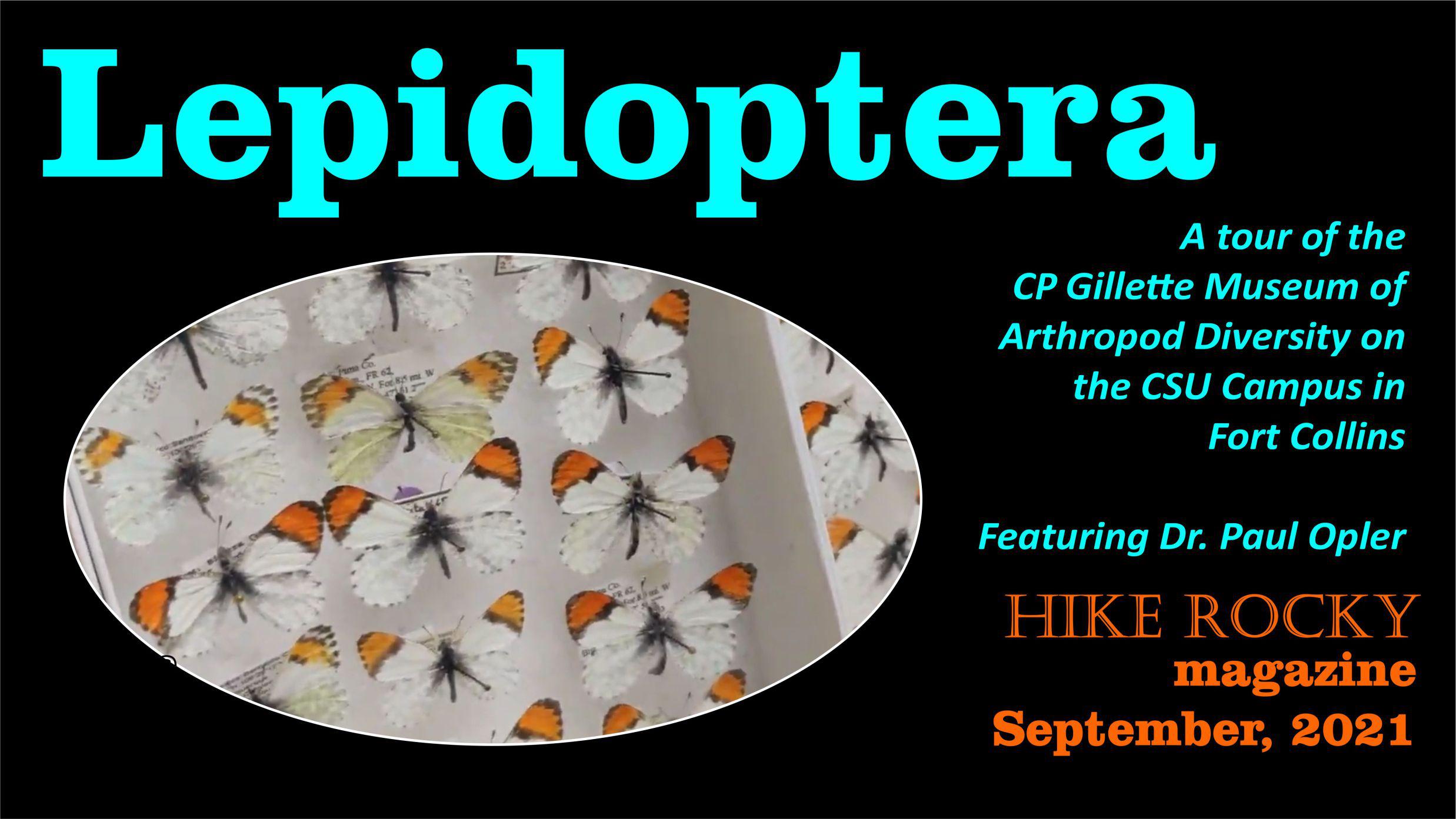
Visit https://youtu.be/NeodLAecUXc for a tour of the CP Gillette Museum by Dr, Paul Opler!
https://youtu.be/NeodLAecUXc
“Once I find something I like, I tend to keep doing it until it is proven to me that I should be doing something else,” he said about his dedication to and perhaps, obsession with butterflies. A year after he graduated from UC Berkeley, he was drafted into the Army; given his status as a college graduate, he was stationed at the First Army Medical Lab in New York City where he spent two years identifying mosquitos. He was able to take early leave to attend graduate school at San Jose State University and later went on to receive his doctorate in entomology at Berkeley.
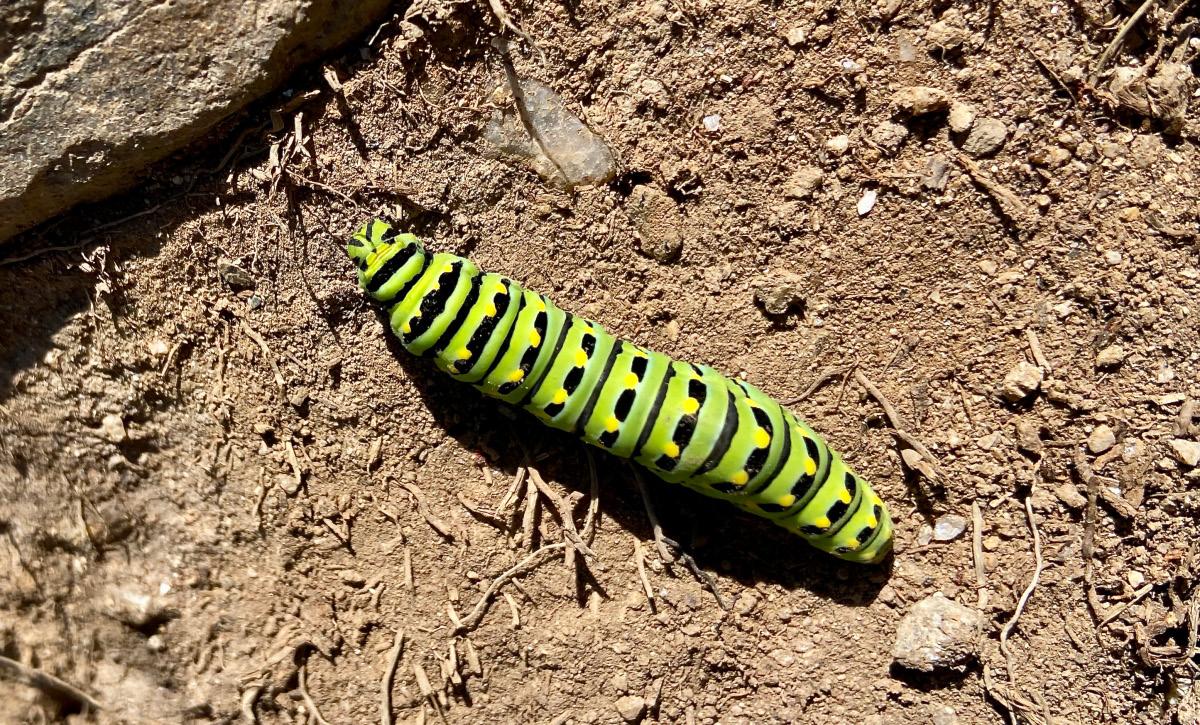
Caterpillar of Anise swallowtail; identified by Dr. Paul Opler
Photo by Marlene Borneman

Anise swallowtail, Papilio zelicaon, Swallowtail family, identified by Dr. Paul Opler.
photo by Pamela Johnson
He became the first entomologist in the US Fish & Wildlife's endangered species program in Washington, D.C., and subsequently transferred to Fort Collins where he directed the Division of Research's editorial and publication program. He retired from the Department of Interior in 1997. The day following his retirement, Paul became a special appointment professor in the entomology department at Colorado State University.
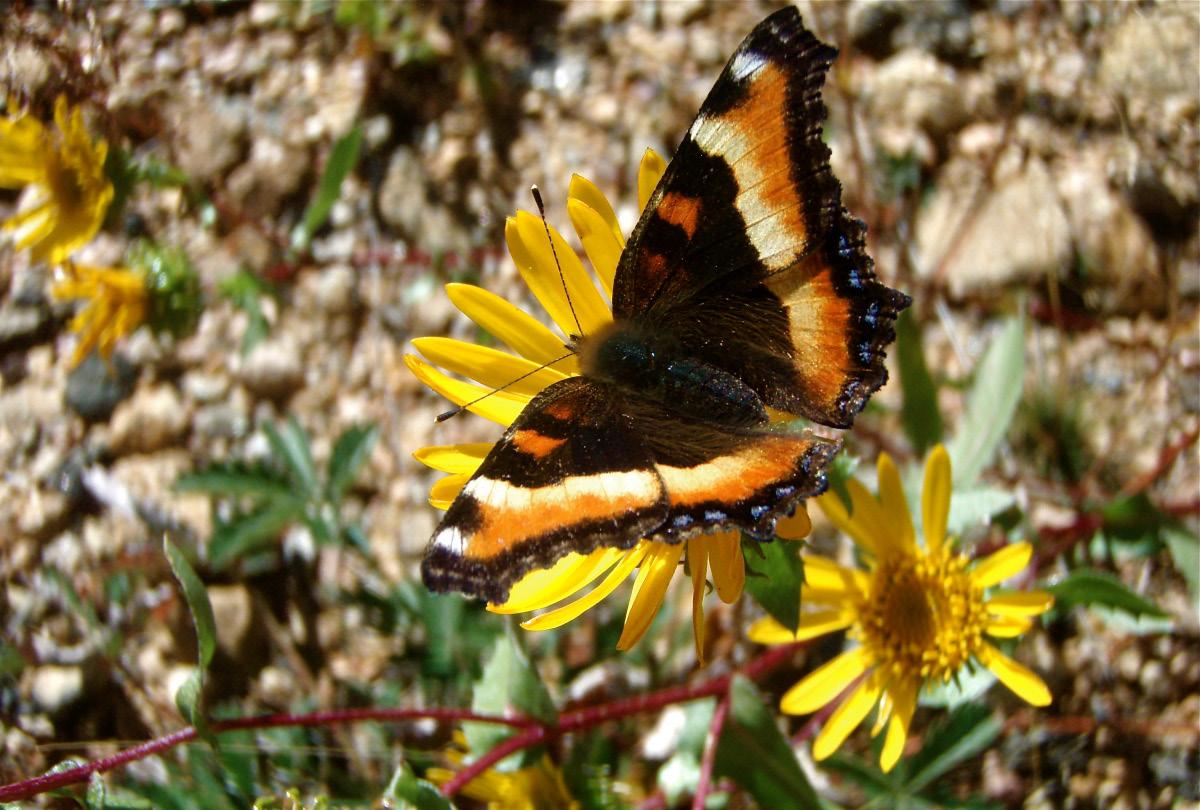
Milbert tortoiseshell, Aglais milberti, Brushfoot family, identified by Dr. Paul Opler
Photo by Marlene Borneman
He currently serves as a student advisor and research fellow, working from his office in the C.P. Gillette Museum of Arthropod Diversity on campus. This museum has more than 35,000 Lepidoptera (mostly moth) specimens endemic to Rocky.
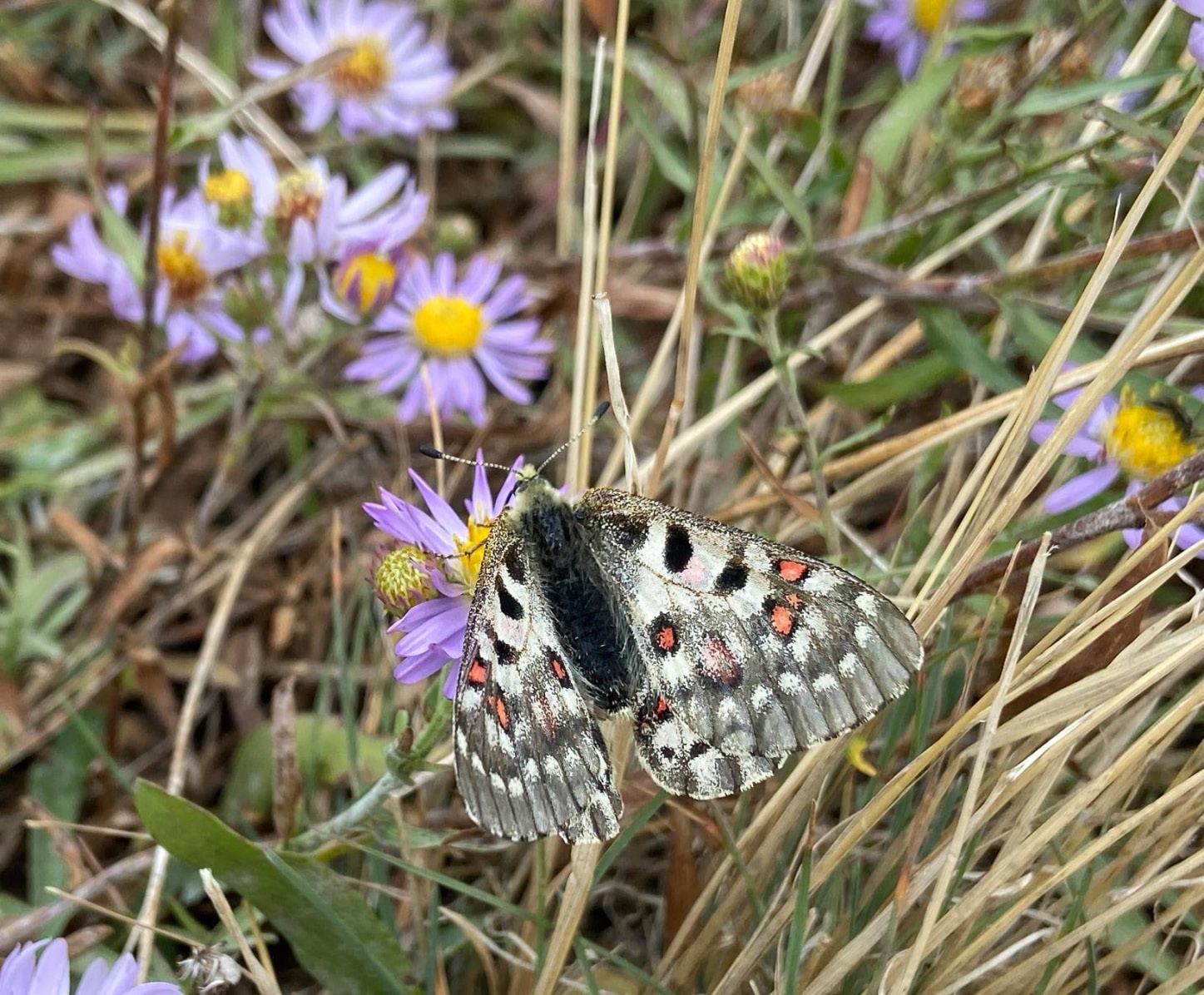
Rocky Mountain parnassian, female, Parnassius smintheus, Swallowtail family, identified by Dr. Paul Opler
Photo by Marlene Borneman
Butterflies have varying life spans; some adults only live a couple of days while others become torpid to overwinter in a hollow tree, emerging in the spring to lay eggs on their host plants. When the caterpillars (or larvae) hatch they feast on the plants' new, green leaves. The more than 1,000 species of larvae in Rocky will then enter the pupa stage of development, in which the wings are developed. When the butterfly or moth emerges, after hardening, they spread their wings and fly, looking to mate.
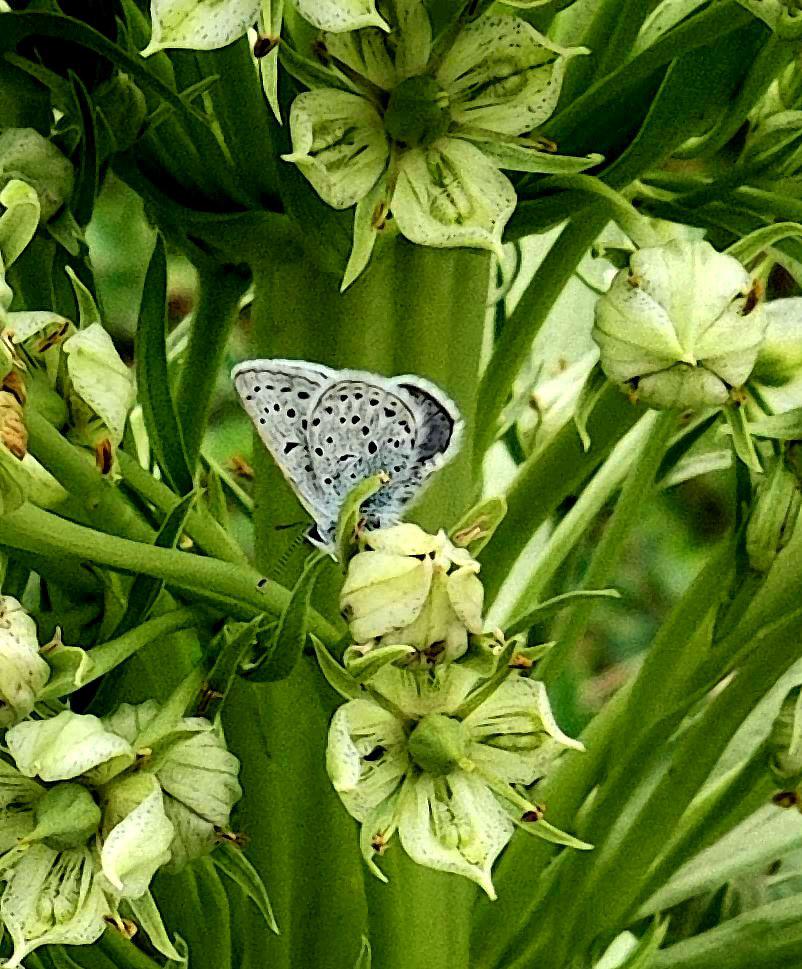
Greenish blue male, Plebejus saepiolus, Gossamerwing family, identified by Dr. Paul Opler
Photo by Barb Boyer Buck
There is diversity within species, too, with specimens showing regional differences. “This is the result of having been geographically isolated for thousands of millennia.”
Flights vary between species, too, with some flying once a year and others, every other year. “Some fly only in even-numbered years and others only in odd-numbered years,” explained Dr. Opler.
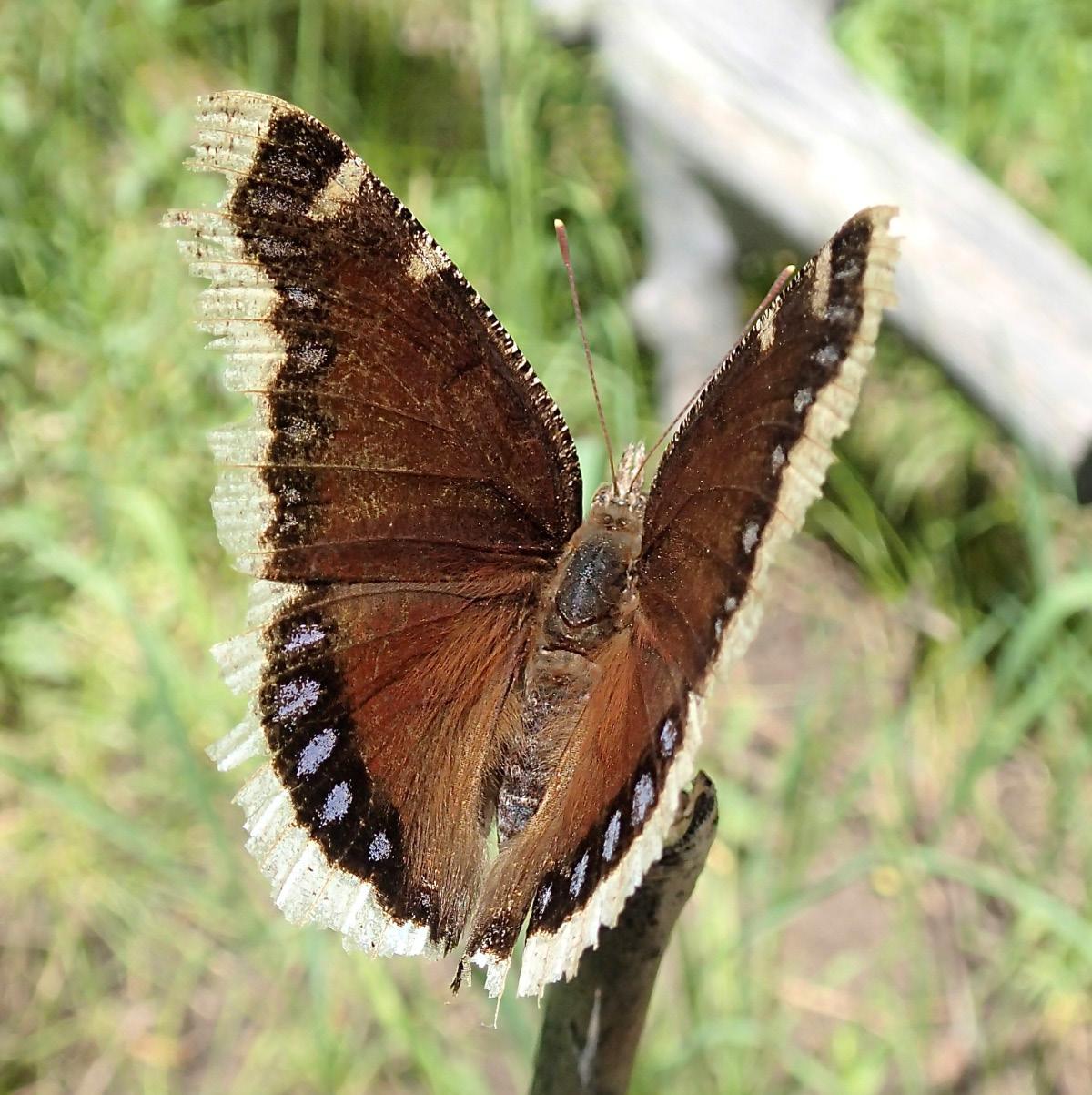
Mourning Cloak (overwintered), Nymphalis antiopa, Brushfoot family, identified by Dr. Paul Opler
Photo by Marlene Borneman
The genetic make-up of Lepidoptera has been studied, too. Dr. Opler has a poster on the wall of his office, detailing the genomes of the more than 800 species of North American butterflies. “With today's technology, you can get a complete genome which is like, 30 million base pairs from one or two legs of a butterfly specimen,” he said.

Weidemeyer admiral, Limenitis weidemeyerii, Brushfoot family, identified by Dr. Paul Opler
Photo by Pamela Johnson
During mating season, some males perch in a likely spot, waiting for the females to flit by. Others search for potential mates by flying over suitable habitat. When basking (warming up their wings), some perch laterally (wings closed) and others, dorsally. “They are cold-blooded creatures so they can't fly until their bodies warm up,” explained Opler.
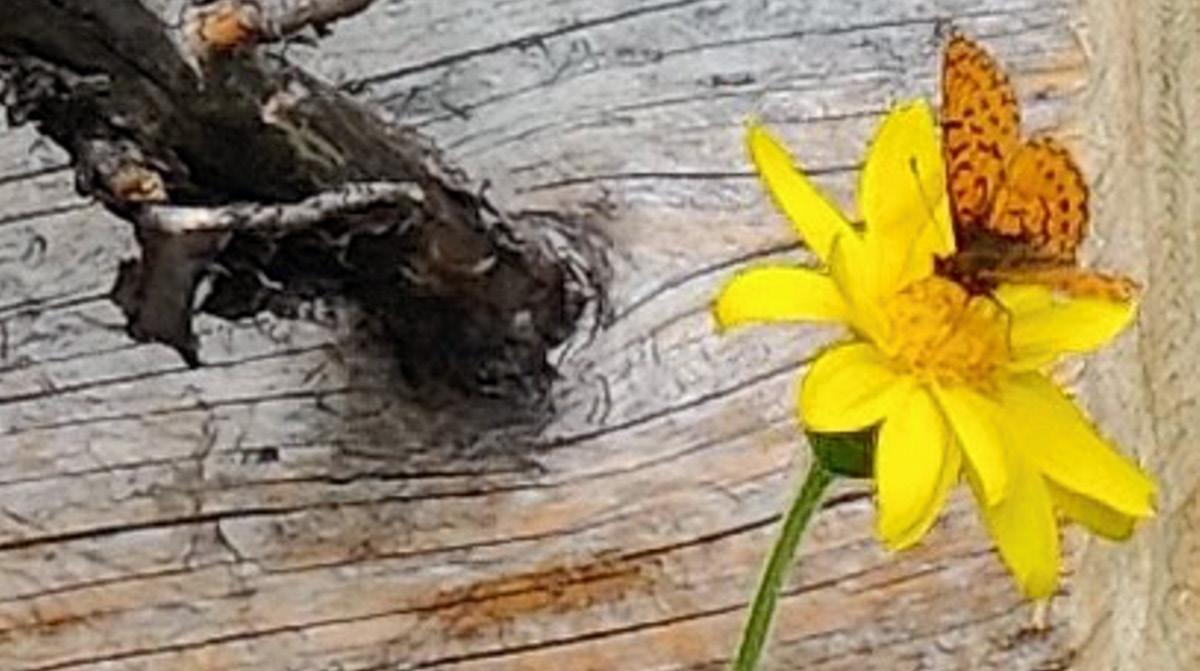
Bog fritillary, Boloria eunomia, Brushfoot family, identified by Dr. Paul Opler
Photo by Barb Boyer Buck
“There are several species of alpine butterfly that live only on rock slides in Rocky Mountain National Park, because it's warmer on rock slides than it is on the surrounding tundra. They can fly earlier in the day and later in the afternoon” in the highest reaches of Rocky. discovered a completely torpid butterfly. She put the insect on her dining room table thinking it was dead and went into the other room for a while. When she returned, the butterfly was flying around the room, so she thought it had come back to life.
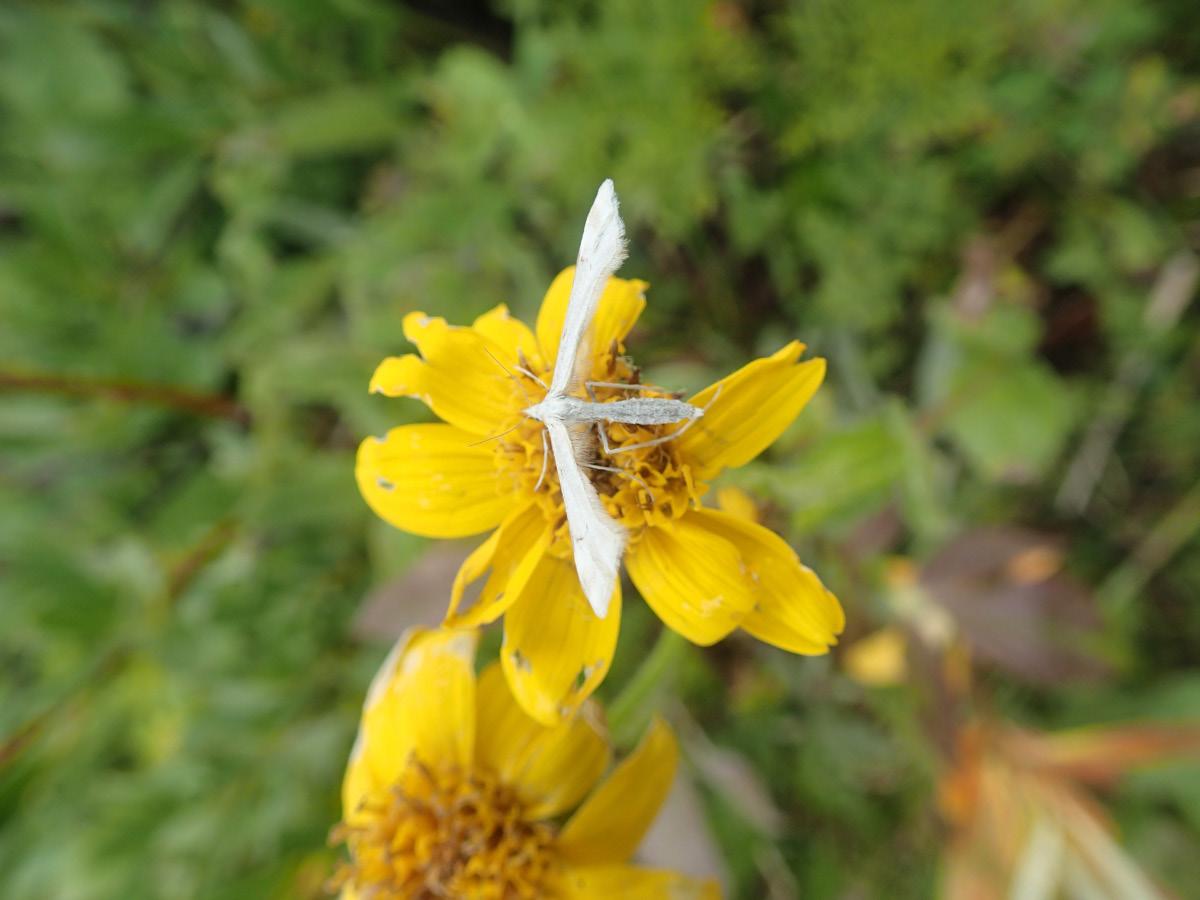
Plume moth, family Pterophoridae, identified by Dr. Paul Opler
photo by Marlene Borneman
Butterflies evoke joy and wonder as they gracefully flutter around the landscapes of Rocky. And thanks to the obsession of one man, the field research of another, and thousands of hours of dedicated field work by many volunteers, we can understand and appreciate them even more.

Rocky Mountain parnassian, male (lacking most black markings!) Parnassius smintheus, Swallowtail family, identified by Dr. Paul Opler.
Photo by Marlene Borneman
For more information on Dr. Paul Opler, visit:
agsci.colostate.edu/agbio/peoplebutton/faculty/paul-opler
For more information on Rocky's Butterfly project, see:
https://www.nps.gov/romo/learn/nature/rocky-mountain-butterfly-project.htm

Barb Boyer Buck is a professional writer, journalist, editor, photographer, playwright, and researcher who lives in Estes Park. Barb is the managing editor of HIKE ROCKY online magazine.

www.snowypeakswinery.com




